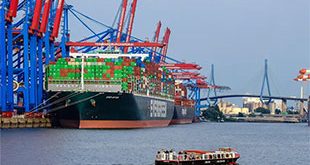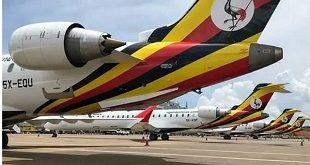
By Dicta Asiimwe
The road from Kampala to Ntungamo, 400km away, is bumpy, especially the 120km stretch between Masaka and Mbarara which is under construction.
Fortunately, as our five-car convoy snaked along, we had a police escort car with siren blaring to cut through the mass of slow moving evening traffic, which was jammed at some spots. The road is in the Ankole-Masaka cattle corridor, which is a semi-desert, with very little rain and lots of dust.
Yet we had to move fast. We were hurrying to an interview with President Yoweri Museveni “ and that made us VIPs, although it did not save us from the suffocating dust wave.
Usually, journalists would not travel 400km just to attend a press conference, but this was the first press conference the President was giving since the July 11 twin bomb attacks on Kampala that killed about 80 people.

The attacks were at Kyadondo Rugby grounds and an Ethiopian Restaurant in Kampala. On the morning after the attack, Museveni visited both places to view the carnage. He also visited Mulago Hospital to sympathise with the injured being treated there and console the bereaved. He failed to address journalists with any details; merely vowing to arrest the attackers.
Why the President chose to have journalists ferried all the way from Kampala to tiny Ntungamo on the border with Rwanda, I will never know. Perhaps, the President decided to sneak the press conference neatly into his busy schedule; promoting Prosperity for All in the district. Whatever the case, the Media Centre on July 14 herded 40 journalists, local and international, into several vans for the bumpy drive to Ntungamo. The journey was supposed to start at 1pm but began at 4.30pm instead and lasted six hours.
After clearing the Masaka-Mbarara, with its mounds of murram and dust we hit the Mbarara- Ntungamo stretch. Although it is not under reconstruction, it was equally uncomfortable and progress was slow because of the numerous potholes. We were running late and the event organiser, Uganda Media Centre boss Fred Opolot, kept leaning out of his dust-covered luxury Toyota Prado VX Four-wheeler to urge the convoy to move faster. But the Coaster van carrying most journalists could not move any faster and Opolot soon sped off, probably to calm down the President, since he should have been waiting for a long time.
The president’s Ntungamo country home is on a murrum road, just off the road to Runkungiri. It is a nondescript single-story white house in a big compound, fenced with barbed wire.

It was freezing cold when we arrived after 10pm and, with teeth chattering, people fell over each other to grab a cup of hot tea.
It was a relief when, unlike his usual style, the President arrived in the tent where he was scheduled to address the press even before the journalists had finished going through the security checks.
He had moved out of his house a few metres away without any visible bodyguard and most people realised he had arrived after his Deputy Principal private secretary Grace Akello, alerted them. Unlike, the Kampala crowd who, coming from a warmer place, wore no warm clothes, Museveni had on a checked black and white shirt under a heavy and long black jacket. Still, as he waited for the journalists to get ready, a waiter in black skirt, white blouse, and a waistcoat with flower patterns, served him a warm drink.
‘Two points—,’ the president started as soon as the last journalists, an Al Jezeera team, were ready. He spoke for about 20 minutes; promising to weed out the ‘elements’ that caused the bomb attacks and block the loopholes.
Then it was question time. Opolot allowed one question for each journalist, except Al Jezeera who had requested a short one-on-one interview, which the president refused them. They asked more than one question.
When asked, Museveni said he was ‘œvery angry’about the bomb attacks which he blamed on the Somali radical Islamists group, al-Shabab. The Al-Shabaab are angry too – that Ugandan troops, under the African Union Mission in Somalia (AMISOM) are propping up the regime that, with Ethiopian support, ousted them from power in 2006.
The African Union peace and UN Security Council took the decision to send peacekeepers to Somalia after Ethiopian forces overthrew the Union of Islamic Courts (UIC), which gave birth to Al-Shabaab. Uganda and Burundi are the only countries to send troops there although many promised. Now Al-Shabaab wants to bomb them out of Somalia.
But Museveni said he would instead push to change the AMISOM mandate from peacekeeping to peace enforcement, a position he said the Intergovernmental Authority on Development (IGAD) was likely to agree on.
‘We were in Mogadishu doing our small bit of guarding the sea port, presidential palace and airport,†the President said, “(Now) they have invited us to follow them.’
Museveni said withdrawing troops from Somalia is ‘illogical’ because it would mean surrendering the African continent to ‘terrorists from the Middle East’.
He explained that he decided to send Uganda troops to Somalia because he knew the character of the terrorists there and that if they controlled Somalia the region would have had problems.
Watching him speak, I thought of the many people who oppose Museveni on Somalia.
Dr Kizza Besigye, the leader of Uganda’s biggest opposition party, the Forum for Democratic Change, says Uganda has no business being in Somalia.
He says African countries like Nigeria and Malawi that promised troops have not sent them because the AMISOM mandate is wrong. “There has not been any peace to keep. UPDF has been fighting all along, Ugandans are not told the truth that we are fighting on one side of civil war,’ Besigye said in phone interview with The Independent.
I concluded that Museveni is better off using the chance for hosting the African Union to convince African leaders to choose a better strategy for handling the Somalia problem and the Al-Shabaab.
One way would be to get more AU states to send troops under AMISOM. Merely relying on IGAD might mean Uganda will remain in Somalia alone. IGAD comprises seven countries; Somalia, Djibouti, Ethiopia, Uganda, Kenya, Sudan and Eritrea. IGAD wants the troops increased from the current 6300 to 20,000 but a United Nation’s resolution stops Somalia’s neighbors from deploying in Somalia.
Eritrea, one of the three countries free to send troops to Somalia, is suspended. Sudan has never shown any interests in taking its soldiers to Somalia.
If Uganda manages to get the AMISOM mandate changed but other AU countries fail to send in more troops, the Somalia war might become a war between Uganda and the Al-Shabaab.
After the press conference, at about midnight, the President, who never appears in a hurry to sleep, started telling journalists about how they were welcome to ‘one of his country homes.’ He explained that he had a house in Ntungamo because his ancestors were born in the present Ntungamo and Rukungiri districts.
Then it was meal time – a buffet of chicken, beef, potatoes, rice, matooke and mostly tea or coffee. There was chilled soda and juices but most people steered clear of them because of the cold.
The journalists were told they would sleep in Mbarara, about 66kms away, and we immediately went back to our vehicles. Most journalists, however, decided to drive through the night and were in Kampala at about 7.30 am the next day.
On the journey back, along the bumpy and dusty road, I kept thinking how Museveni is a resolute man who will not flinch from a fight. But I was keenly aware that even powerful countries, like the United States of America, that have in the past attempted to pacify Somalia, have failed and fled. It is too early to tell what Museveni and Uganda’s road to Somalia might be like, but it is certainly bumpier than mine to Ntungamo.
 The Independent Uganda: You get the Truth we Pay the Price
The Independent Uganda: You get the Truth we Pay the Price





